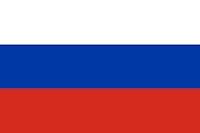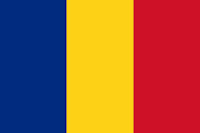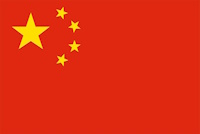HOMECOMING
Ben’s assignment to the Epting crew and departure for combat duty in North Africa had coincided with the first anniversary of the attack on Pearl Harbor. Now he was returning home a celebrated war hero in the shadow of another Pearl Harbor anniversary.
For Ben, Pearl Harbor had unleashed a strong sense of mission. For many other Americans, the attack had triggered dark feelings of fear and loathing directed toward people of Japanese ancestry, at home and abroad. Ben had only a vague understanding of the impact the attack had had on Japanese immigrants and their American-born children back home. They had borne the brunt of the Pearl Harbor backlash. Occasionally, he’d read a newspaper story about some hateful comment from a politician back home that caused his blood to boil. But it was impossible for Ben, and most other Americans, to comprehend the injustice inflicted on more than 110,000 people of Japanese ancestry on the West Coast. In the months ahead, Ben would find himself in the middle of the controversy over what some politicians on the home front euphemistically called “the Japanese question.”
But those searing events still lay in Ben’s future. For now, he was excited to be coming home. He was confident his new status as a decorated combat veteran—indeed, the first Japanese American war hero—would shield him from the bigotry and prejudice that he had experienced in the army before his overseas deployment.
Throughout his return journey across the Atlantic, Ben was constantly reminded of the war’s human toll, even among those fortunate enough to have survived their time in combat. Ben and the small contingent of Eighth Air Force airmen who had completed combat tours with bodies and minds in relatively good shape represented a minority aboard the transport. Most of the passengers had suffered emotional and psychological trauma and had been classified as “psychoneurotics,” in the preferred terminology of the time.1
On December 7, after a six-day passage, the vague outline of Long Island and the Jersey Shore took shape on the horizon. Then the Manhattan skyline came into view. Ben’s transport steamed past Sandy Hook and threaded its way through the Verrazano Narrows before emerging into the Upper Bay at the mouth of the Hudson River. Ahead loomed a breathtaking sight: the majestic Lady Liberty, torch in hand, bathed in glorious sunlight.
The combat veterans—men forever scarred by war—stood at the rails in silent awe. Tears of joy and relief streaked the cheeks of some. One of the trauma cases sat on the deck sobbing. Ben was among the misty-eyed men at the rail, soaking it all up. Years later, in the twilight of his life, Ben would distill his unforgettable homecoming from Europe to a single understated sentence: “It was a beautiful sight when I saw the Statue of Liberty, I’m telling you.”2
IN NEW YORK CITY, BEN BOARDED A cross-country train and settled in for a fourteen-hundred-mile journey through the American heartland. After a stop in Chicago, he continued on to Omaha. He could have remained on the train all the way to North Platte, but he had some business to attend to in Lincoln, so he got off the train and made a fifty-mile detour. Ben made his way to the State Capitol and, without an appointment, walked into the governor’s office. He explained to aides that he wanted to thank the governor for comments he had made a few months back.
The incident that had moved Ben to delay his homecoming occurred the previous June at the thirty-fifth National Governors’ Conference in Columbus, Ohio. US victories in the Pacific in the first months of 1943 had prompted discussions about whether the Roosevelt administration should consider releasing Japanese and Japanese Americans who had been forcibly evicted from their West Coast homes in the months following Pearl Harbor.
California had been ground zero for the wave of angry anti-Japanese sentiment that swept across America, and the backlash had spurred President Franklin Roosevelt to issue Executive Order 9066 on February 19, 1942. The order allowed the military to deem people of Japanese ancestry a national security threat. They were removed from an “exclusion zone” that included all of California and parts of Washington, Oregon and Arizona, and confined to interior camps ringed by barbed wire and armed guards. About two-thirds of them were US citizens born in this country.
One of the most outspoken advocates for the expulsion of people of Japanese ancestry from the West Coast had been California’s current Republican governor, Earl Warren. As the state’s attorney general, Warren had claimed that the presence of these people in California was “the Achilles’ heel of the entire civilian defense effort.” In Warren’s view, the Japanese Californians were engaged in a “studied effort” at sabotage that had gone undetected because of “their method of living.” Warren’s support of the expulsion and confinement of California’s Japanese and Japanese American residents had been on full display in his 1942 campaign for governor, which he won in a landslide, with 57 percent of the votes cast.
Six months after his inauguration, when proposals to release people of Japanese ancestry from the camps gathered support in the late spring of 1943, Earl Warren had used the power of his office and his influence in national Republican circles to broadly paint people of Japanese ancestry as security threats. At the National Governors Conference that June, Warren fulminated against allowing California’s exiled Japanese residents to return to their homes. “If the Japs are released, no one will be able to tell a saboteur from any other Jap,” Warren declared. He added, “We don’t want to have a second Pearl Harbor in California. We don’t propose to have the Japs back in California during this war if there is any lawful means of preventing it.”3
Nebraska governor Dwight Griswold, also a Republican, pushed back against Warren’s diatribe. “Thousands of Japanese have been released with the approval of the FBI without one particle of trouble,” Griswold declared.4
Griswold’s public comments impressed Ben. There weren’t many voters of Japanese descent in Nebraska, so Griswold had little to gain politically by picking a fight with the powerful governor of California. It seemed to Ben that Governor Griswold had taken a principled stand because it was the right thing to do, and he wanted to personally thank him.
After introducing himself and explaining why he was there, Ben soon found himself in conversation with the governor and one of his top aides. After a warm and cordial meeting, Ben resumed his journey home.5
Later that day, Thursday, December 16, 1943, Ben was reunited with his parents and siblings on the family farm outside of Hershey.
BEN RECEIVED A HERO’S WELCOME IN Hershey and North Platte. On his first full day home, he visited Hershey High School, where “he gave a very interesting talk before the high school students Friday and was enthusiastically received by the students,” the North Platte Tribune reported.6
Hershey was a place of mixed memories for Ben. He hadn’t enjoyed farm work and didn’t miss it. He missed hunting with his friend Gordy Jorgenson along the North Platte River and hanging out with his friends at Hershey High School, but not the hard life he and his family had known. His father was now seventy-one and his mother was sixty-seven. Their lives had been marked by stress, struggle, and hard physical labor, and they showed their age.
Ben’s oldest brother, George, had assumed day-to-day responsibilities on the farm. Only one other sibling remained in Hershey: Ben’s youngest sister, seventeen-year-old Rose, was a senior at Hershey High School. The other girls—Fuji, Cecile, Wilma, and Beatrice—had migrated to Chicago and were now married.
Making the rounds of his old haunts in Hershey and North Platte, Ben basked in the adulation of the news coverage that had preceded his homecoming. During his brief stopover in Omaha, he had seen his picture in the window of Brandeis, the city’s largest department store, as part of a display honoring “NEBRASKA’S HEROES.” The Hershey drugstore owner asked Ben if they could borrow his war medals for a public exhibition.7
One morning after his arrival, Ben was awakened by a visitor. He was a prominent local rancher and justice of the peace, Blaine Runner, a tall, rugged man with blue eyes and a towering local legend who’d earned a Carnegie Medal for heroism in his early twenties when he rode his horse into a prairie fire to save two local girls from the wind-whipped flames. Runner presented Ben with a bottle of twenty-year-old bourbon, one Hershey hero to another.8
Ben had hoped to see his best friend from high school, but Uncle Sam had Gordy Jorgenson in his grip. Gordy had married one of their Hershey High classmates in 1941 and she had given birth to a baby boy in April 1942. Gordy had tried to enlist in the navy later that year, but failed the physical exam because of a heart defect. The army was happy to have him, and Gordy was now training for a Pacific deployment. Ben visited Gordy’s mother instead.
One of headiest experiences for Ben during his time at home was the media interest in interviewing him. From his earliest attempts to enlist in the armed forces after Pearl Harbor, Ben’s tale of seeking combat to demonstrate his loyalty had proven to be an irresistible story to journalists. Stories and photographs of Ben had sporadically appeared in Nebraska newspapers after his enlistment. He had been the subject of a few newspaper items after his December 1942 assignment to a combat crew, and he had briefly enjoyed a national spotlight when he was interviewed in London by movie star Ben Lyon for his national radio show in the US.
After spending much of the summer and fall in the military backwaters of North Africa, Ben had reverted to his lowly status as just another faceless Nebraska farm boy. Then, in early October 1943, shortly after Ben’s return to England from this third and final North Africa deployment, a twenty-seven-year-old correspondent in the London bureau of the United Press news agency got wind of his story. The correspondent’s name was Walter Cronkite.
The B-17 Flying Fortress bases were much more convenient for London-based correspondents looking to make reporting day trips into the English countryside, but Cronkite made the trek out to Hardwick to interview Ben. His angle was the story of a humble Japanese American B-24 gunner finishing twenty-five missions and then asking to keep flying. Cronkite had not only found the only Japanese American aerial gunner in the Eighth Air Force, he had found a gunner who couldn’t get enough of aerial combat.
Six days after Ben completed his thirtieth mission on November 5, Cronkite’s profile of him appeared in one of Nebraska’s state capital newspapers, the Lincoln Journal Star. The story hailed Ben as “one of the fightingest men in Uncle Sam’s air force.” Cronkite described how Ben had ended up flying five extra missions and offered further insight into why he was willing to keep risking his life. “My debt to the United States is greater than that of most of these other fellows,” Ben explained to Cronkite. “My debt is greater—and my obligations larger. That’s why I wanted another tour of duty.”9
WALTER CRONKITE’S STORY HAD uncovered an interesting twist in Ben’s story. This son of Japanese immigrants wasn’t content to fight only Hitler and Mussolini. He wanted to fight his blood kin in Japan. From a journalistic viewpoint, a good story got even better: Japanese American boy wants to bomb Tokyo to prove his patriotism.
Ben had told Cronkite that he had already raised the idea of a Pacific deployment with the army, and had gotten a cool reception. “The army tells me that the danger would be too great if I were captured, but if they won’t let me fly I’d like to go to officers’ training school and perhaps get into the intelligence section,” Ben said.10
Cronkite’s story had clearly piqued the curiosity of his London-based competitors, and they picked up on the latest twist about Ben’s close call on the last of his five extra missions. The photograph of Ben holding his shattered turret circulated among the American correspondents in London, and more items followed. In November, the Associated Press news service distributed a photograph of Ben in his leather flying suit alongside Tupelo Lass. “Sgt. Ben Kuroki of Hershey, Neb., is the only Japanese American flying in the European theater—and he’s plenty good,” the photo cutline declared. Building on Cronkite’s story, the AP photo cutline added this nugget of news: “He’s returning to the States for further training before going to fight the Japs in the Pacific.”11
The North Platte Telegraph ran a December 3 article about Ben’s close call over Münster, based on the shattered turret photo, which the paper said had been shared with it. (The paper didn’t say how it got the photo, and it didn’t publish the image.) On December 11, AP circulated still another photo of Ben, this one showing him as he bade farewell to four ground crewmen in England “before leaving for the United States.” The photo cutline noted Ben would “return for training which will enable him to fight the Japs in the Pacific.”12
By the time that Ben arrived in Hershey, he was a big story in Nebraska. The state’s most powerful radio station, Omaha’s WOW, sent a reporter to interview him. A United Press reporter rewrote a North Platte Daily Bulletin story about Ben that repeated the narrative about him going to fight in the Pacific. “Ben Kuroki, after a lot of practice, is on his way west to help his native country blast apart the native country of his ancestors,” the UP article began. The article quoted Ben: “I didn’t join the army with the intention of fighting in Europe. I joined to avenge Pearl Harbor.”13
While the army had balked at Ben’s request to fly combat missions in the Pacific, Ben persisted. No longer the quiet hayseed from Nebraska pleading for a chance to fight, he was mobilizing public opinion to pressure the army to send him to the Pacific.
JUST BEFORE CHRISTMAS, BEN WAS among twenty local boys at home on military furloughs who were feted by North Platte businessmen at the local country club. During the ceremonies, Ben and the other young men made brief remarks about their military experiences. Ben covered the highlights of his combat tour before pivoting to a subject that was increasingly on his mind: the treatment of Japanese and Japanese American people in wartime America. Ben “thanked the people of North Platte for their tolerance and kindness toward American-born Japanese,” according to a short item in the Omaha Morning World-Herald.14
Ben had received orders to report to an Army Air Forces reassignment center in Santa Monica, California, by January 5. In his final days at home, he was a guest of honor at a dance sponsored by Japanese American youth in the North Platte area. The festive affair was a high note as Ben prepared to return to duty.15
On January 3, 1944, Ben said goodbye once again to his parents and boarded a train for Los Angeles. When the train stopped in Denver late that evening, reporters were waiting at the station to snag an interview with the Japanese American war hero.
Reporters for the Associated Press, United Press, and International News Service agencies all filed stories with the same theme. “An American-born Japanese who participated in European bombings as a turret gunner on a Liberator said today he hopes his new assignment in San Diego eventually will include duty in the Pacific so he can fight the Japanese ‘face-to-face, ’” the Associated Press dispatch began. The INS dispatch included a quote from Ben that offered a fuller explanation of his quest for a Pacific deployment. “I want to fight the Japanese face-to-face,” Ben said. “I am a good American and I want to help avenge Pearl Harbor.”16









